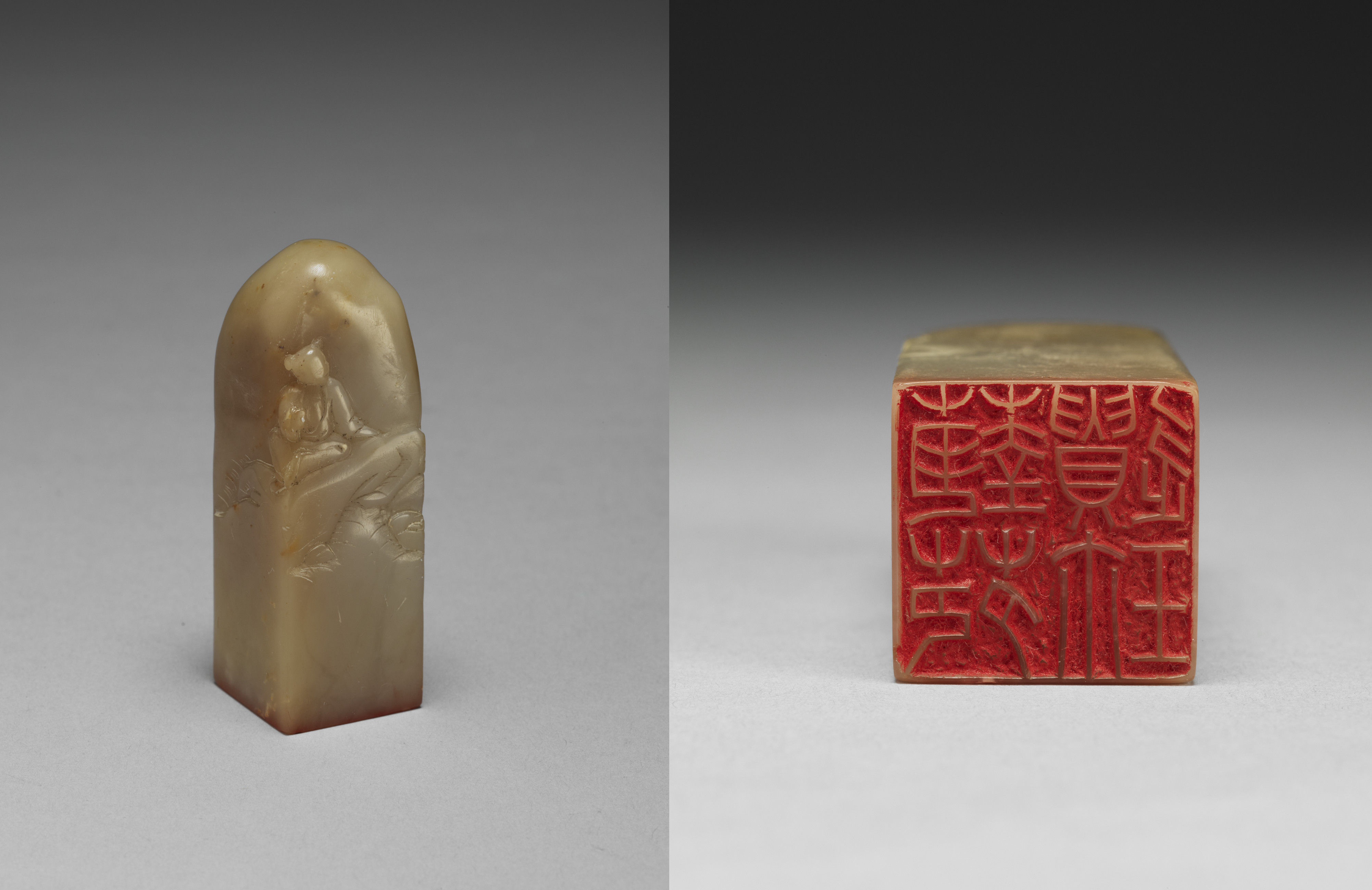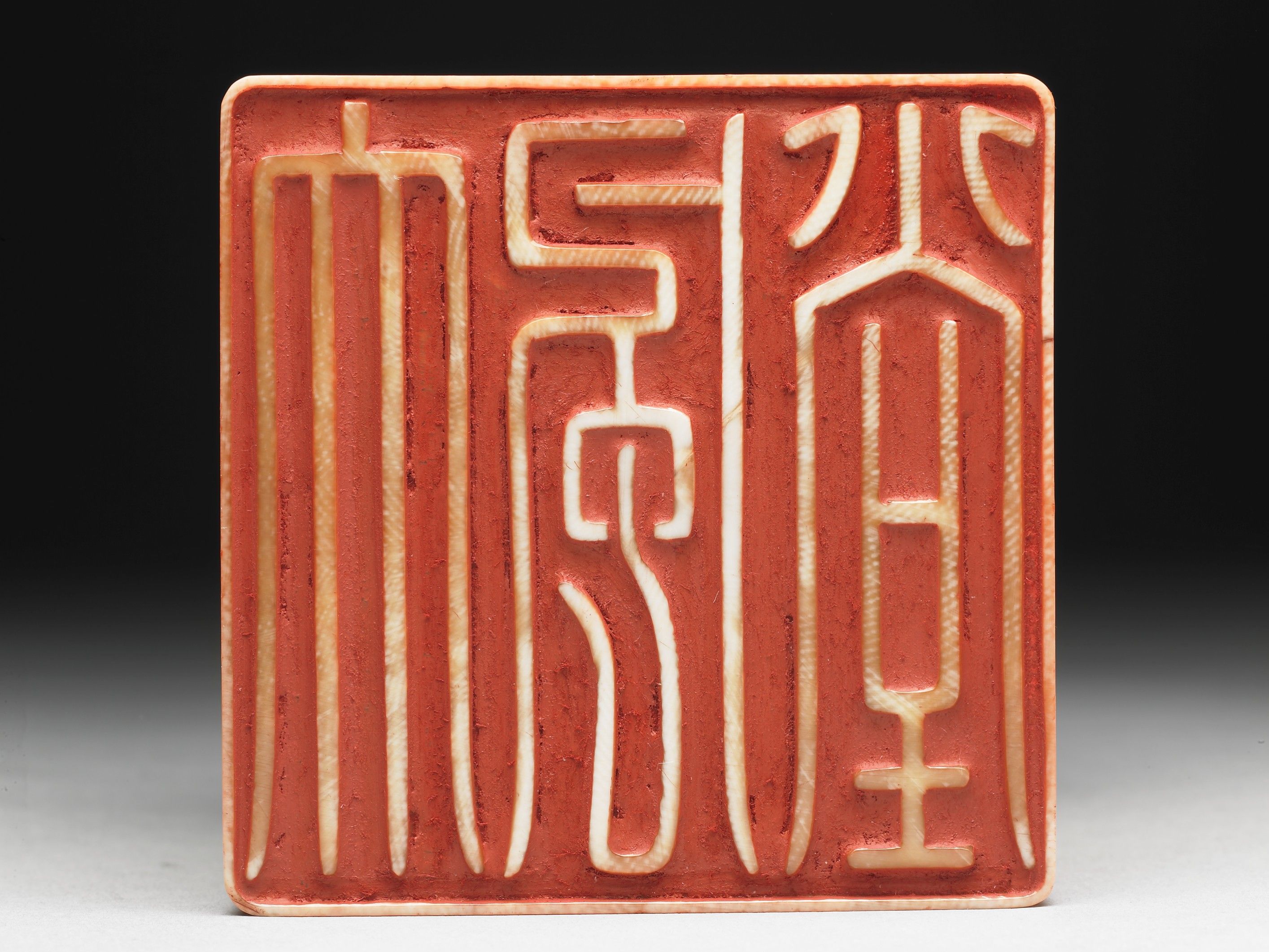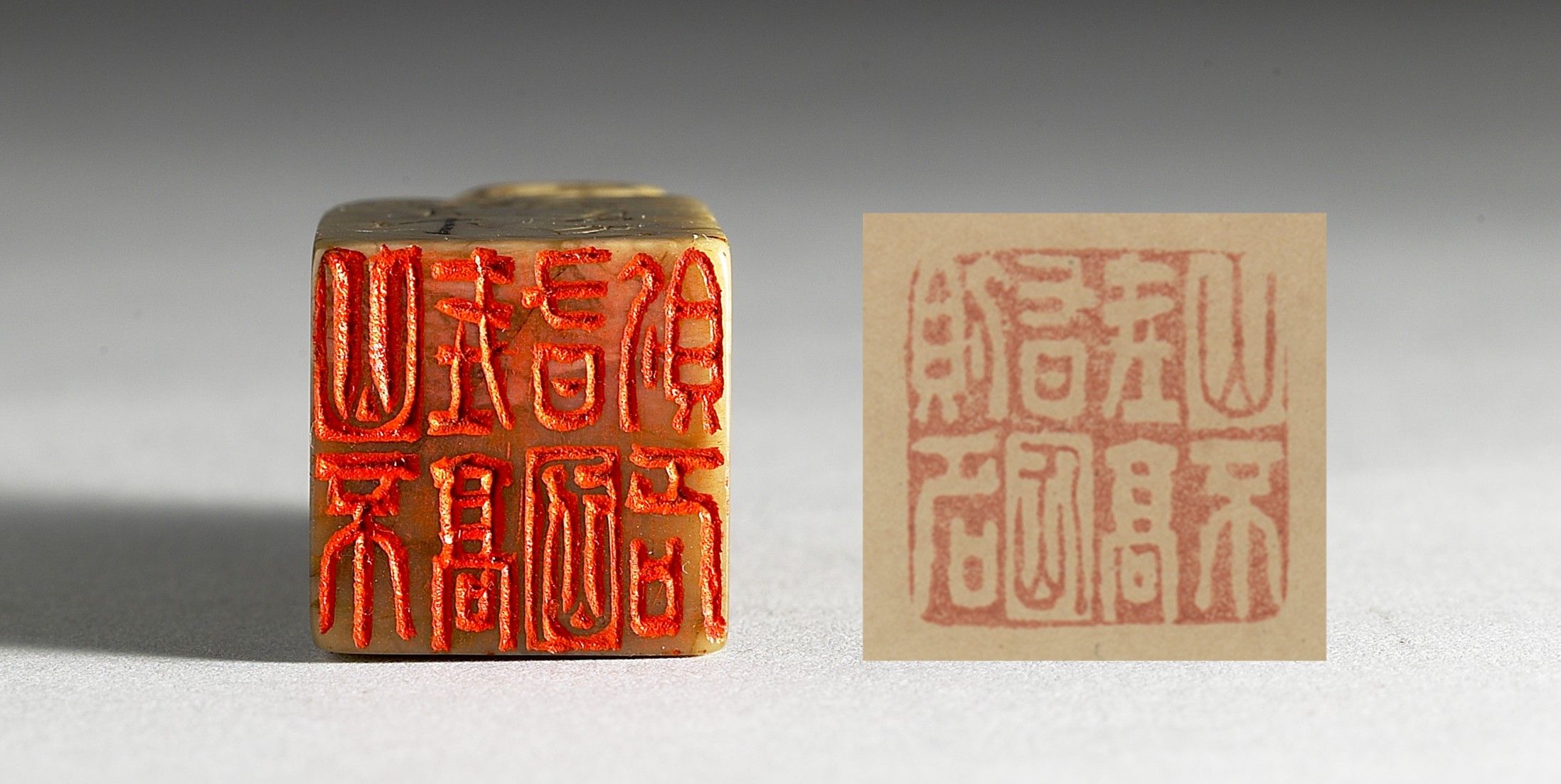Chinese Seals in the Passage of Time

Discover three millennia of Chinese art through the humble seal. These unique artistic symbols, carved in stone and bronze, are not merely marks of identity, but silent witnesses to time. From imperial courts to artists' studios, they have chronicled the journey of Chinese artistic tradition, each impression telling a story of authenticity and cultural heritage.
In the winter of 1932, I first encountered a genuine Chinese seal in a dimly lit antique shop in Shanghai's old quarter. The proprietor, an elderly man with tobacco-stained fingers and eyes that had seen half a century of antiques pass through his hands, held the stone seal with such reverence that I found myself drawn to its quiet presence. It was then that I began to understand these small objects that have marked Chinese art for thousands of years.
 Fig.1 A Han Dynasty seal and its impression
Fig.1 A Han Dynasty seal and its impression
The seal, or yìnzhāng as it is called, carries its three thousand years of history with remarkable dignity. During the Han Dynasty (202 BCE - 220 CE), when the empire stretched across vast plains and mountains, artists began adopting these marks as their own. By the time of the Ming Dynasty (1368 - 1644), what started as simple stamps of authority had evolved into something far more complex - a language of identity pressed in red.
 Fig.2 A Shoushan stone seal and its impression
Fig.2 A Shoushan stone seal and its impression
There is something honest about a well-carved seal. The Shoushan stone, when properly cut, reveals its character like a person showing their true nature under duress. The bronze ones age differently, developing a patina that speaks of the hands that have held them. The seal script characters, precise and deliberate, tell their stories without embellishment or apology.
In my years of study, I have encountered seals of many kinds. The name seals stand as testament to their makers, while collection seals record the quiet journey of artworks through time. Poetry seals carry fragments of verse like whispers from the past, and studio seals mark the sacred spaces where art is born. Each serves its purpose without pretense or unnecessary flourish.
 Fig.3 Name seal of Chinese painting master Zhang Daqian
Fig.3 Name seal of Chinese painting master Zhang Daqian
The positioning of these marks is never arbitrary. The upper left corner commands attention like a captain at the helm of a great ship. The lower right grounds the piece with the surety of a foundation stone. Between these points lies a universe of possibility, each placement a decision that cannot be undone, much like the words we choose to speak into existence.
Today's artists approach these traditions with both respect and innovation, though I sometimes wonder if they fully grasp the weight of history in their hands. They understand, at least, that while methods may change, the fundamental truth of the seal remains constant. It is still, as it has always been, a mark of presence and authenticity in an increasingly uncertain world.
For those who collect and preserve these artifacts, the responsibility is clear and unforgiving. Each seal impression must be studied with the attention of a scholar and the patience of a sage. The truth of an artwork often lies in these small red marks, waiting to be discovered by those who know how to look, who understand the language of silence and certainty these impressions speak.
 Fig.4 Studio seal of Chinese painting master Zhang Daqian
Fig.4 Studio seal of Chinese painting master Zhang Daqian
In the end, these seals remain what they have always been: quiet witnesses to the continuing story of Chinese art. They neither boast nor hide, but simply state what is true. In this, perhaps, lies their greatest achievement - the ability to span centuries with nothing more than a touch of red ink and the weight of tradition.
I often return to that shop in my memories, though it has long since disappeared beneath Shanghai's relentless modernization. The old proprietor's reverence for that simple stone seal taught me more about the nature of Chinese art than all my subsequent years of formal study. Some truths, it seems, can only be learned through silence and observation.
 Fig.5 A poetry seal and its impression
Fig.5 A poetry seal and its impression
